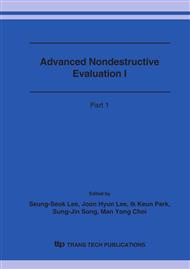p.666
p.670
p.674
p.678
p.684
p.688
p.694
p.699
p.703
Influence of Inclusion on Deformation of Crack Tip in Rotating Disc by Photoelasticity and Method of Caustics
Abstract:
Fatigue and fractures such as blades and discs, which originate in the centrifugal force caused in the rotor, become factors that often cause serious accidents. The enlargement of machine and structure improves the possibility that do the latency of minute cracks and inclusion in materials in manufacturing processes. Severe working conditions also promote the propagation of the crack while operating. Thus, it is very important for the improvement in the safety of materials to analyze the interference problem of inclusion and crack. In this study, an inclusion in the rotating disc and the interference problem of the crack were examined. The influence of the mechanical property of the inclusion and the distance to the crack tip was examined. The stress intensity factor was determined by using photoelasticity and method of caustics. As a result, the stress intensity factor was decreased when Young’s modulus of inclusion increased. Moreover, the stress intensity factor decreased as the distance from the crack tip to the inclusion boundary became longer. The stress intensity factor of the crack on the rotation center side increased more than the cracks on the circumference side of the inclusion.
Info:
Periodical:
Pages:
684-687
Citation:
Online since:
October 2006
Authors:
Price:
Сopyright:
© 2006 Trans Tech Publications Ltd. All Rights Reserved
Share:
Citation:


